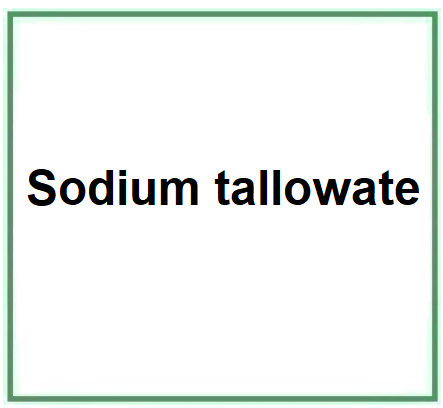Sodium tallowate is a chemical compound, the sodium salt of the fatty acids found in animal fat, mainly beef (tallow). It is a compound of sodium, oxygen, carbon, and hydrogen.
The name defines the structure of the molecule
- Sodium indicates that the compound is a sodium salt. It's the result of the reaction between animal fat (tallow) and an alkali such as sodium hydroxide.
- Tallowate comes from "tallow," which is the animal fat used in the saponification process.
Description of raw materials used in production
Tallow: Main source of the fatty acids required.
Sodium hydroxide reacts with the fatty acids to form the salt.
Step-by-step industrial chemical synthesis process
- Hydrolysis of Fat. Tallow is hydrolyzed to release the fatty acids.
- Neutralization. The released fatty acids are neutralized with sodium hydroxide, forming the sodium salt (sodium tallowate) and glycerol.
- Separation. Sodium tallowate is separated from other reaction products.
- Purification. It is purified through various methods to remove impurities.
- Packaging. Sodium tallowate is packaged for use in various products like soaps and detergents.
What it is for and where
Cosmetics
Cleansing agent. Ingredient that cleanses skin without exploiting the surface-active properties that produce a lowering of the surface tension of the stratum corneum.
Surfactant - Emulsifying agent. Emulsions are thermodynamically unstable and are used to soothe or soften the skin and emulsify, so they need a specific, stabilising ingredient. This ingredient forms a film, lowers the surface tension and makes two immiscible liquids miscible. A very important factor affecting the stability of the emulsion is the amount of the emulsifying agent. Emulsifiers have the property of reducing the oil/water or water/oil interfacial tension, improving the stability of the emulsion and also directly influencing the stability, sensory properties and surface tension of sunscreens by modulating the filmometric performance.
Surfactant - Foam booster. It has the effect of introducing gas bubbles into the water and affects the cleaning process by helping to spread the cleanser. Since sebum has an inhibiting effect on the bubble, more foam is produced in the second shampoo.
Surfactant - Cleansing agent. Cosmetic products used to cleanse the skin utilise the surface-active action that produces a lowering of the surface tension of the stratum corneum, facilitating the removal of dirt and impurities.
Viscosity control agent. It controls and adapts, Increasing or decreasing, viscosity to the required level for optimal chemical and physical stability of the product and dosage in gels, suspensions, emulsions, solutions.
CAS 8052-48-0
UNII 07RIK6QMEW
EC Number 232-491-4
Commercial applications
Soaps. It is one of the main ingredients in the making of traditional soaps, where it acts as a surfactant, aiding in cleaning and removal of dirt and oils.
Cleansers. Used in some cleansers for its ability to remove grime and grease.
Properties
Surfactant Helps to reduce the water's surface tension, allowing for better removal of dirt and oils.
Emollient: May have emollient properties, helping to moisturize and soften the skin.
![]() Sodium tallowate
Sodium tallowate 

